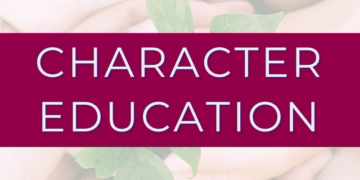Decoding Enrollment Dynamics: How Student Demographics Are Reshaping Universities
Embarking on your academic journey requires understanding the ever-changing educational landscape. Keeping abreast of current trends enables you to make informed decisions, aligning your educational path with your unique aspirations.
Understanding Shifting Enrollment Patterns
Recent data reveals intriguing shifts in higher education enrollment. While undergraduate enrollment has seen an overall increase, the composition of the student body is evolving. Notably, there’s a rise in non-traditional students—those aged 21 and older—alongside a slight decrease in traditional first-year students. This dynamic environment reflects a growing number of diverse learners seeking varied educational opportunities tailored to their needs.
The surge in non-traditional students marks one of the most significant trends. These individuals often bring substantial life experience and specific career goals to their studies. Their increasing presence underscores a demand for flexible, relevant education that aligns with their personal and professional lives. This shift prompts institutions to adapt by exploring innovative recruitment strategies and program designs to better serve both new and returning students. These adaptations include offering more flexible learning formats and pathways to accommodate diverse schedules and learning styles.
Making the Right Choice: How to Approach Major Selection Strategically
Selecting a college major is a pivotal decision that shapes future career paths and personal fulfillment. It’s about more than just picking a subject; it’s about aligning your passions with realistic opportunities. Approaching this decision strategically can lead to a more rewarding and successful academic experience.
Aligning Interests with Opportunities
Students are increasingly strategic about their education, carefully considering both personal interests and job market realities. Fields like business and nursing remain popular, likely due to their perceived job security and high demand. Other areas seeing increased interest include health-related studies, tech fields, and social sciences.
While current trends offer insights, it’s crucial to consider future industry needs. Experts suggest evaluating long-term job stability, potential salary, and overall career growth when choosing a major. This forward-thinking approach can lead to a fulfilling and adaptable career.
Igniting Innovation: Fostering Entrepreneurial Skills in Academia
The academic world is evolving, with higher education institutions placing greater emphasis on innovation. This shift aims to cultivate an entrepreneurial spirit, preparing students for a rapidly evolving professional landscape. By creating environments that encourage innovation, universities are helping students develop the skills needed to thrive in today’s economy.
Building Centers for Innovation
Educational institutions are proactively adapting to market changes by creating innovation centers. These hubs encourage collaboration between industry and academia, creating new financial opportunities and providing students with practical entrepreneurial skills through real-world learning experiences. An example of this is the University of Pennsylvania’s Pennovation Center, a space designed to bring together innovators and researchers.
There’s a growing interest in entrepreneurship among students. A survey shows that a significant percentage of teenagers are considering starting their own businesses instead of following traditional career paths. This trend is influencing how curricula are designed, with a greater focus on incorporating digital tools, simulations, and hands-on platforms to equip students with problem-solving skills.
To support career readiness in emerging fields, institutions are broadening their offerings to include alternative credentials like micro-credentials. These pathways offer quicker routes to acquiring specific skills, appealing to those who may find traditional degrees less essential for their career goals. This reflects a move toward more flexible and tailored educational options.
Learning by Doing: The Rise of Social Practice in Higher Education
Higher education is evolving, placing greater emphasis on practical skills and real-world application. This shift aims to better prepare students for their careers and foster a lifelong love of learning. Social practice, which integrates hands-on experience and community engagement, is becoming an integral part of the learning experience.
Integrating Real-World Experiences
Many institutions are actively promoting on-campus employment and workforce development programs. These initiatives allow students to apply what they learn in the classroom to real-world scenarios, gaining valuable hands-on experience. This approach not only enhances their understanding but also boosts their engagement with the subject matter.
There’s a noticeable increase in non-degree programs, micro-credentials, and career technical education. This reflects a growing demand for job-ready skills in rapidly evolving industries. Students are seeking opportunities to gain expertise in fields like AI, cybersecurity, and engineering, making these programs increasingly popular.
Beyond technical skills, employers continue to value broader competencies such as critical thinking, teamwork, and adaptability. Higher education is recognizing the importance of cultivating these attributes, ensuring that graduates are well-rounded and prepared to navigate the complexities of the modern workforce. These skills remain vital for success in any field.
The trends highlight a move towards more flexible, skills-based, and socially engaged learning pathways. By aligning academic exploration with the demands of a rapidly changing global workforce, institutions are better supporting students’ personal and professional growth. This adaptation ensures that higher education remains relevant and valuable.
Recent trends in U.S. higher education highlight the growing importance of integrating social practice and real-world skill development into academic programs. Institutions such as Arizona State University and Ohio State University are enhancing student engagement through on-campus employment and workforce development. There is also an expansion of non-degree programs, micro-credentials, and career technical education (CTE), reflecting the demand for marketable skills in fields like AI and cybersecurity. The focus on broader competencies, including critical thinking and teamwork, remains central to employers.
Expanding Horizons: Preparing Students for Global Opportunities
In an era defined by interconnectedness, higher education plays a crucial role in preparing students for global engagement. Understanding current trends and adapting to evolving needs is paramount for institutions seeking to foster a globally aware student body. By providing opportunities for international experiences and cultural exchange, universities are helping students develop a global mindset.
Navigating the Global Landscape
The drive to unlock student potential through international experiences faces both opportunities and obstacles. Hosting a significant number of international students demonstrates a strong foundation, but shifts in enrollment patterns necessitate a proactive approach. Institutions must critically assess their support systems to maintain a competitive edge.
Recent data reveals interesting shifts. While overall international student numbers remain robust, new enrollments have seen a slight dip. This suggests that while the appeal of international education remains strong, various factors are influencing student decisions.
| Academic Year | New International Enrollments | % Change in New Enrollments | OPT Participants |
|---|---|---|---|
| 2024–2025 | Decreased by 5% | -5% | 271,916 (+12% YoY) |
Data source: Institute of International Education (IIE), Fall 2024 Snapshot on International Student Enrollment from Interstride, May 31, 2025
Despite enrollment fluctuations, student interest in practical training opportunities is soaring. The increasing participation in programs like Optional Practical Training (OPT) underscores the importance of aligning academic pursuits with career aspirations. This data emphasizes the need for institutions to offer robust career services and practical training opportunities.
Institutions are responding by enhancing career readiness programs and leveraging digital outreach. These adaptations aim to meet student expectations and ensure that higher education remains a valuable pathway to global opportunities. By thinking critically and acting globally, institutions can effectively prepare students for success in an interconnected world.
Q&A
Question 1: What are the significant trends observed in US higher education enrollment in Fall 2024 compared to Fall 2023?
Answer: Overall undergraduate enrollment increased by 3.0%. However, this growth is driven by a substantial increase in nontraditional students (aged 21 and older), ranging from 16.7% to 19.7% growth. Conversely, traditional first-year student enrollment decreased by 5.0%, indicating a shift in the student population.
Question 2: What factors are contributing to the rise of nontraditional students in higher education?
Answer: The increase in nontraditional students (age 21+) reflects a growing demand for flexible and relevant education that aligns with their personal and professional lives. These students often bring valuable life experience and specific career goals to their studies.
Question 3: Which college majors are most popular based on student loan application data, and what might explain this popularity?
Answer: Business (12.81%) and Nursing (10.87%) lead in student loan applications, likely due to perceived job security and high demand. Psychology, Education, and Biology also rank highly, reflecting diverse career interests. The popularity reflects a combination of student interest and perceived career prospects.
Question 4: How are higher education institutions adapting to the changing landscape of student needs and career expectations?
Answer: Institutions are responding in several ways: implementing innovative recruitment strategies, offering more flexible learning formats, creating innovation centers to foster entrepreneurship, expanding alternative credentials like micro-credentials, and focusing on hands-on experience and skills-based education to enhance career readiness. They’re also emphasizing broader competencies like critical thinking and teamwork.







